Ansel
Adams
History
Adams, AnselAmerican, 1902-1984
Ansel Adams created a body of work which has come to exemplify not only the purist approach to the medium, but to many people the definitive pictorial statement on the American western landscape. He was also strongly associated with a visionary sense of the redemptive beauty of wilderness and the importance of its preservation. The prestige and popularity of his work has been enhanced by the extraordinary technical perfection of his photography and his insistence on absolute control of the photographic processes.
He studied photography with a photofinisher, producing early work influenced by the then prevalent pictorialist style. Each summer he returned to Yosemite where he developed an interest in conservation. These trips involved exploration, climbing and photography, and by 1920 he had formed an association with the Sierra Club.
His decision to devote his life to photography was influenced by his strong response to the straight photography of Paul Strand, whom he met in 1930. Adams's first important one-man show was held in 1931 at the M. H. de Young Memorial Museum, and in the same year his work was exhibited at the Smithsonian Institution.
After meeting with Alfred Stieglitz in 1933, he began a gallery in San Francisco, the Ansel Adams Gallery. The first of his books dealing with the mastery of photographic technique, Making a Photograph, was published in 1935. Meanwhile, Adams had impressed Stieglitz so much that an important one-man exhibition of his work was shown at An American Place in 1936.
Work from a wartime photo essay on the plight of interned Japanese-Americans was exhibited at MOMA in 1944 under the title Born Free and Equal. During 1944-1945, Adams lectured and taught courses in photography at the museum. This teaching was followed by the establishment of one of the first departments of photography at the California School of Fine Arts (later the San Francisco Art Institute) in 1946.
Following his award of a Guggenheim Fellowship in 1948 to photograph national park locations and monuments, there were five productive years of important photographic work. In each of his images Adams aimed to modulate the range of tones from rich black to whitest white in order to achieve perfect photographic clarity. He also developed a knowledge of the techniques of photographic reproduction to assure that the quality of any reproduced work might approach as closely as possible the standard of the original print.
In the late 1970s his prints sold to collectors for prices never equaled by a living American photographer. By that time Adams had given up active photography to devote himself to revising the Basic Photo Series, publishing books of his life's work, and preparing prints for a variety of exhibitions.
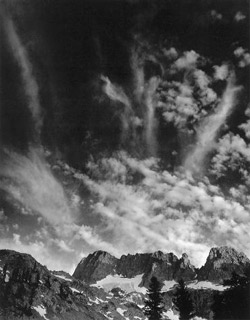
Minarets, Evening Clouds, California
1937
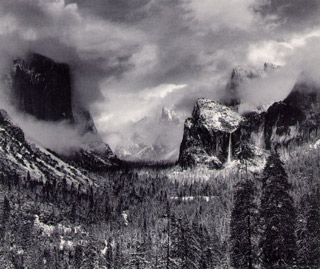
Clearing Winter Storm, Yosemite National Park
1937
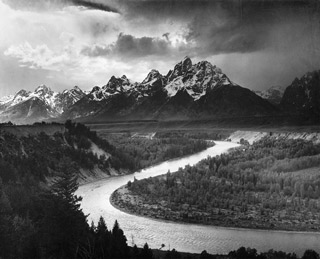
The Tetons - Snake River
1942
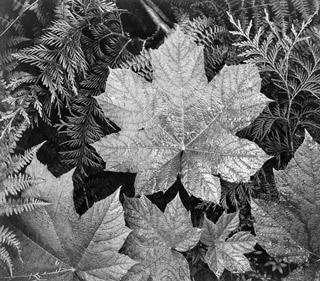
In Glacier National Park
1942
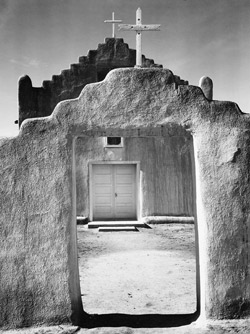
Church, Taos Pueblo
1942